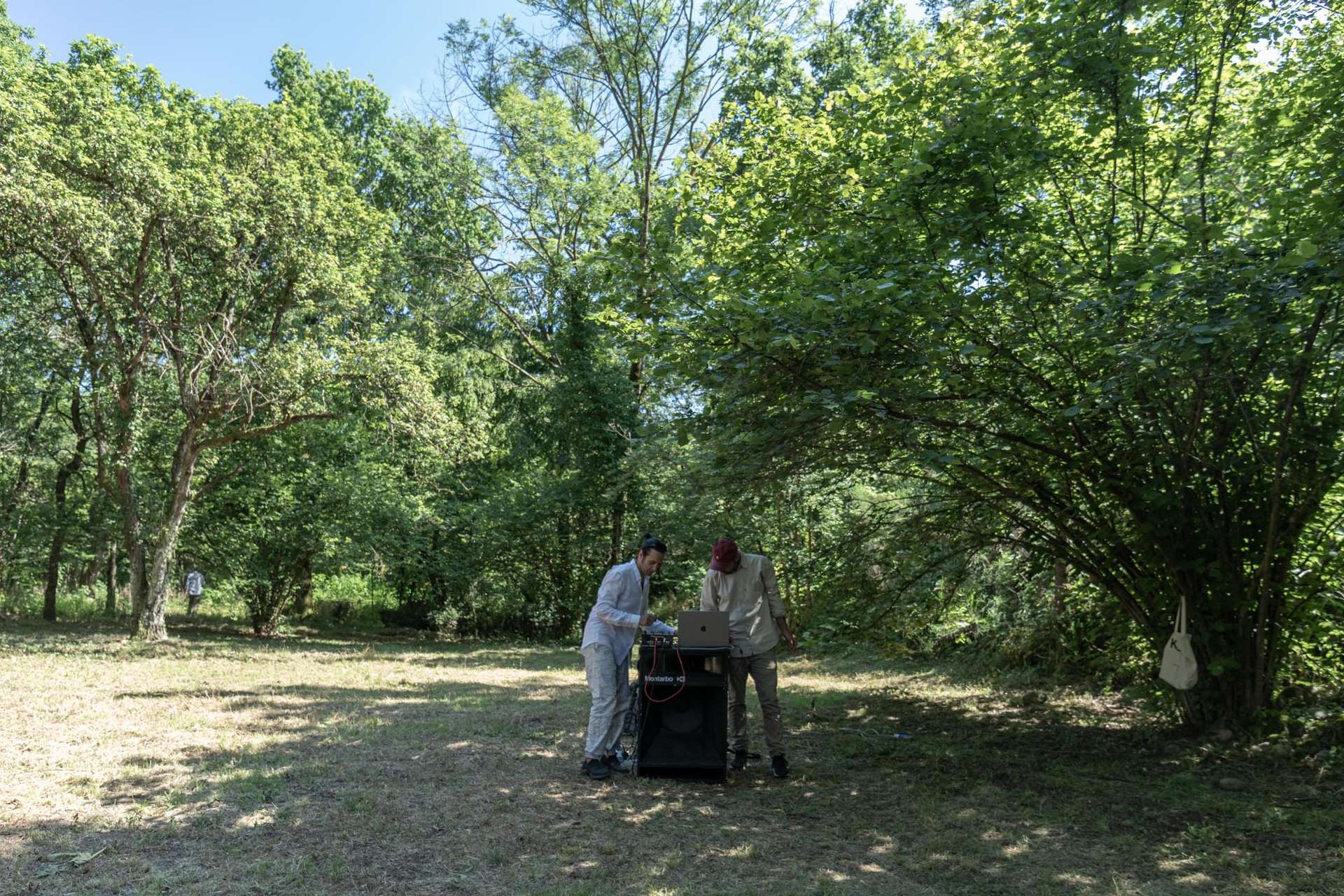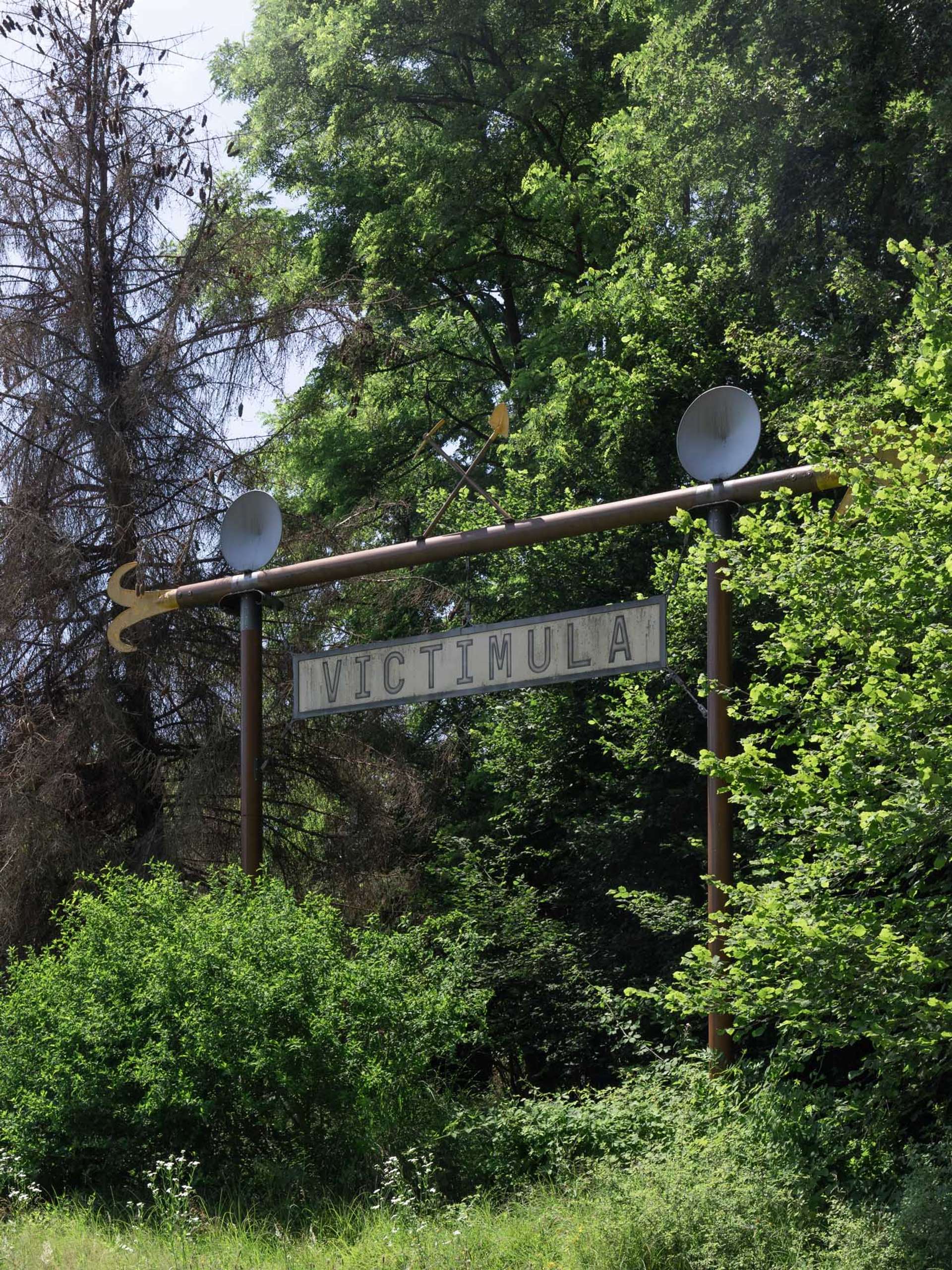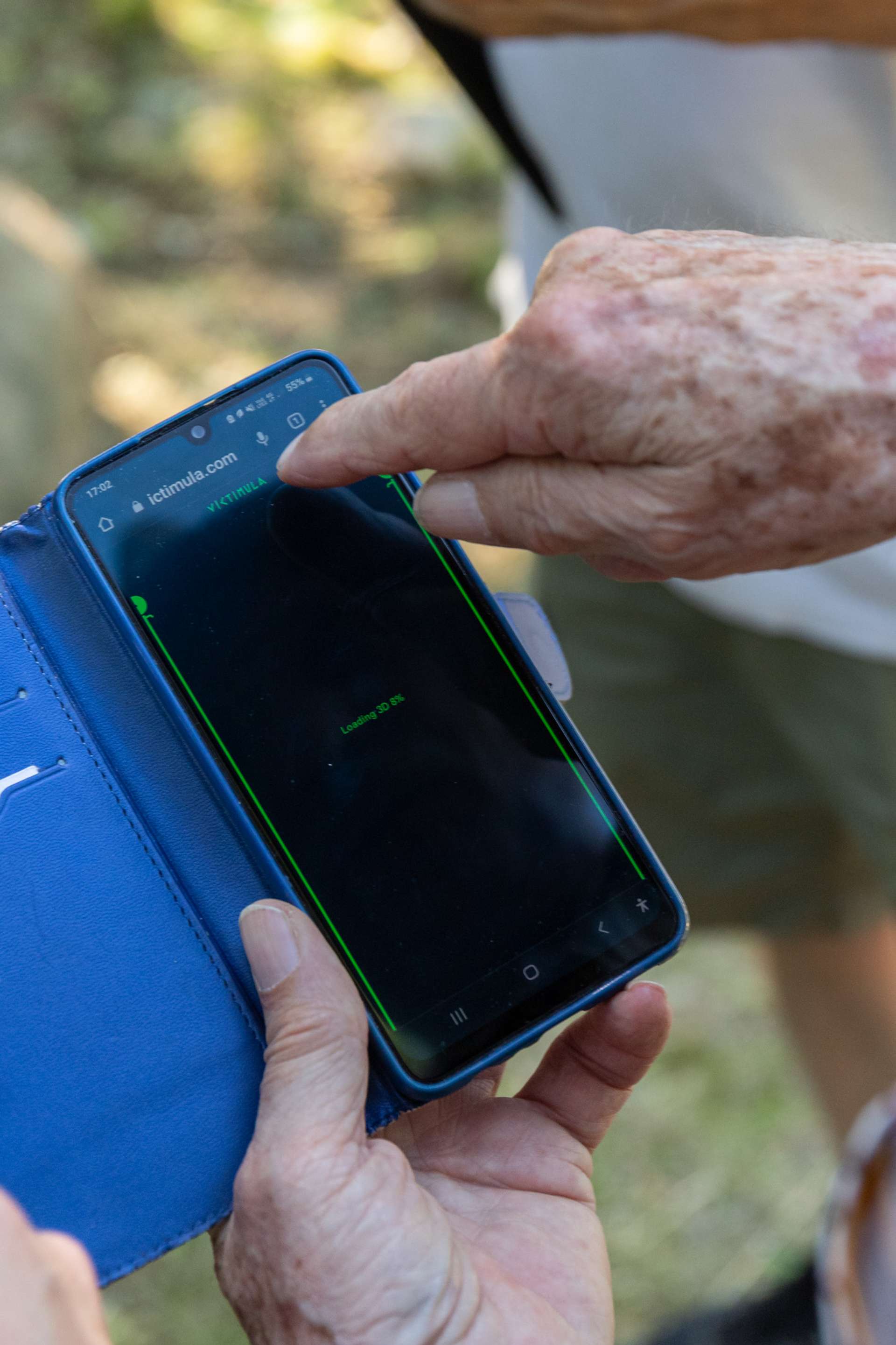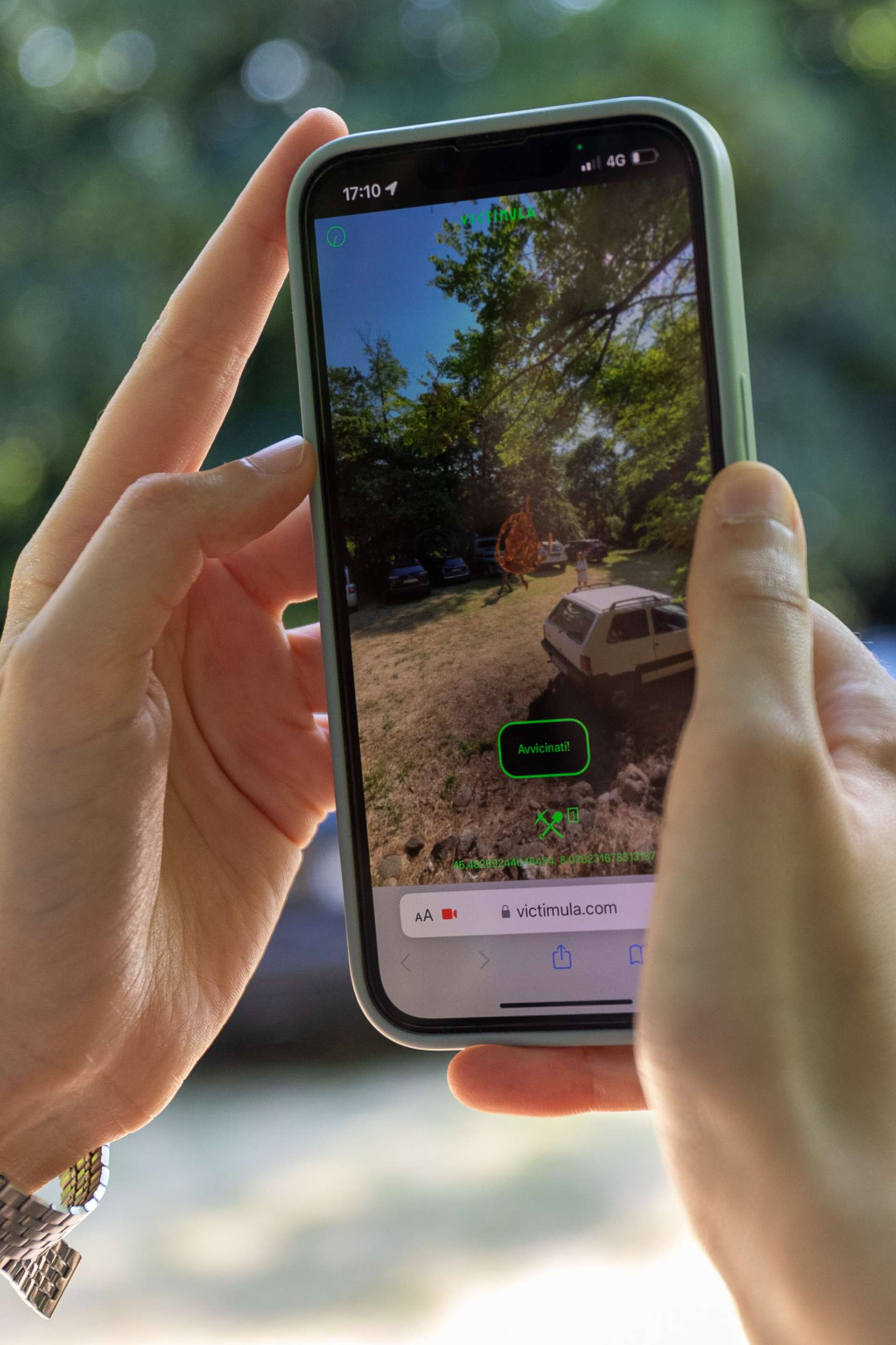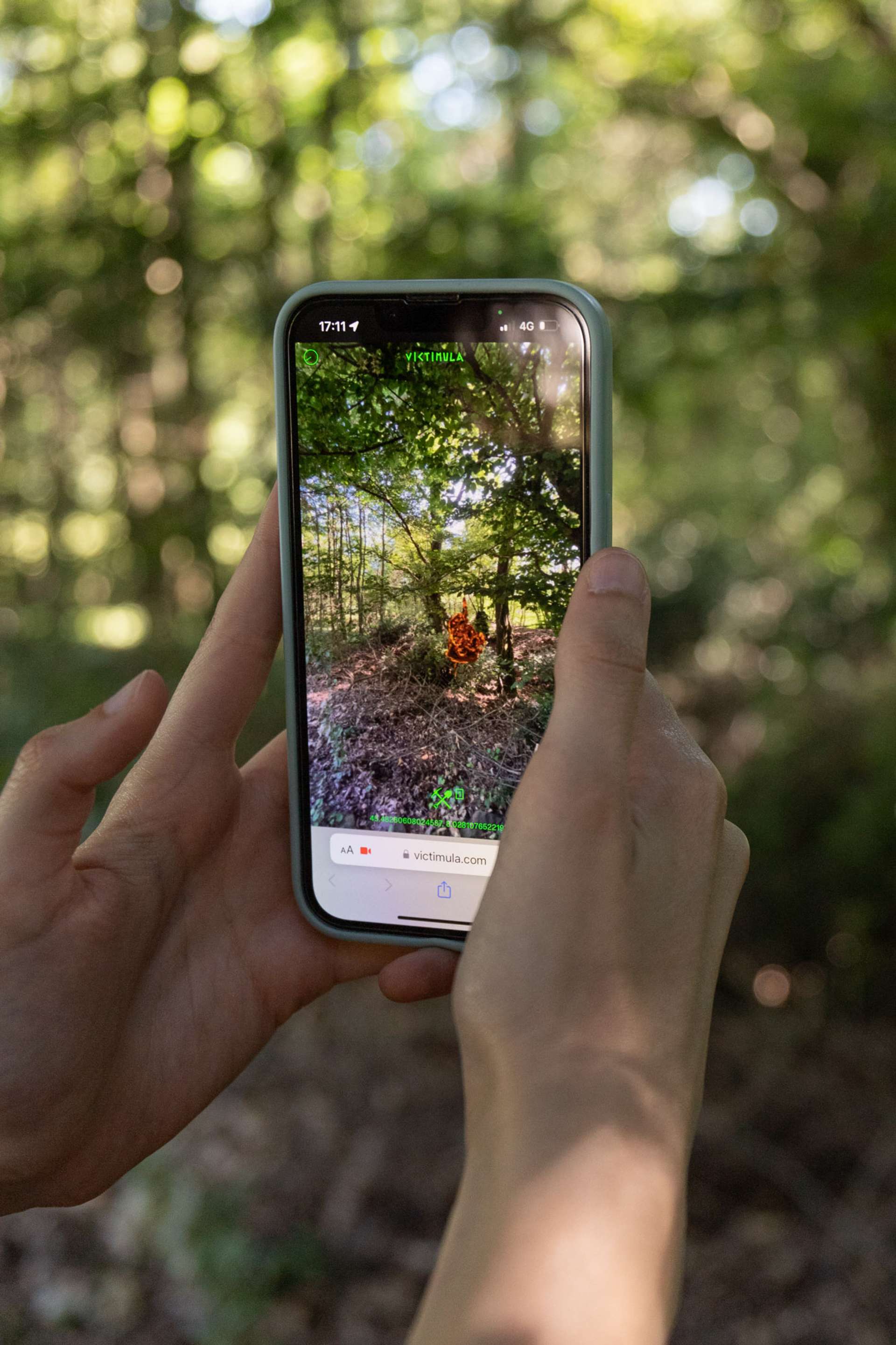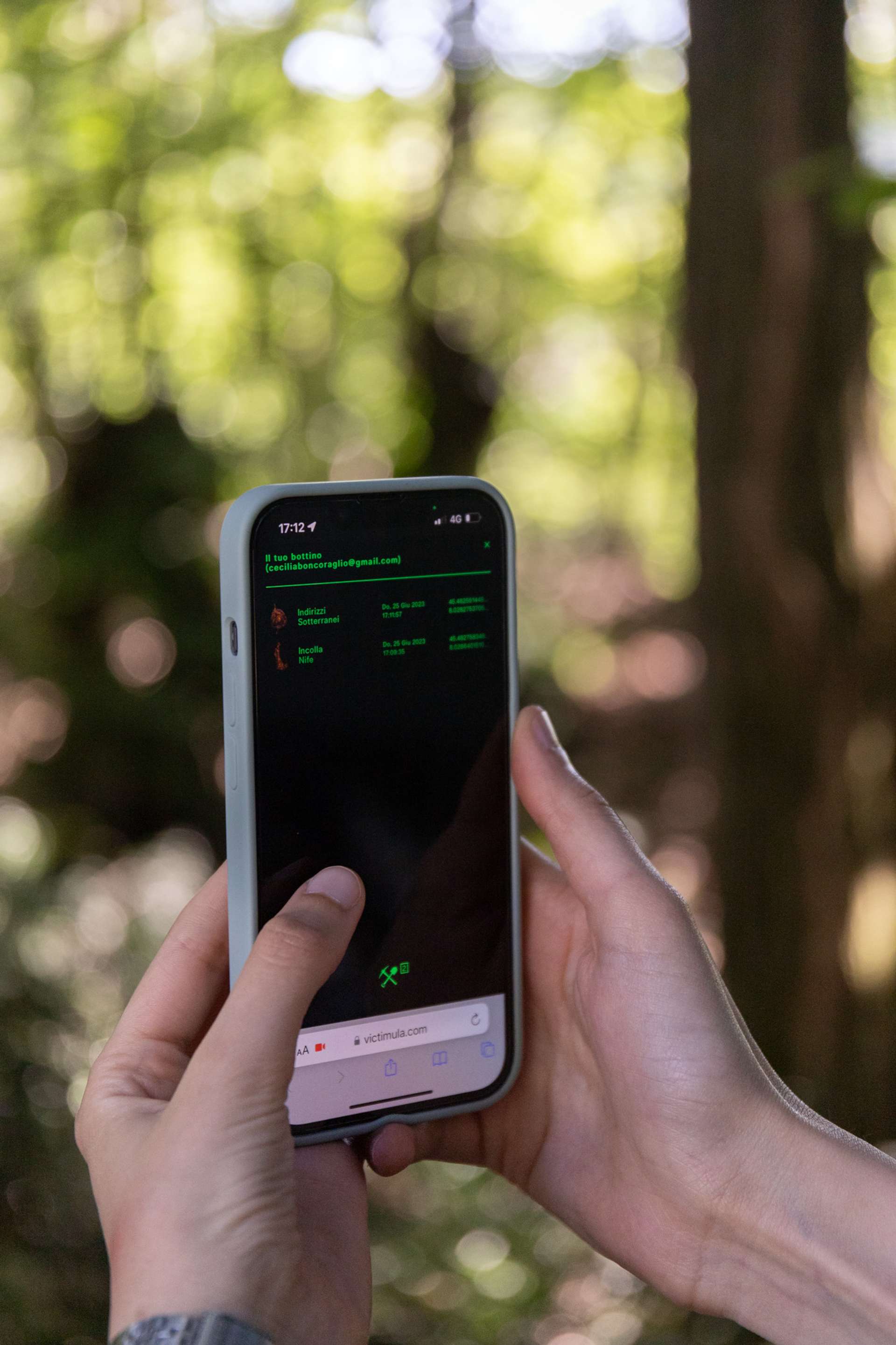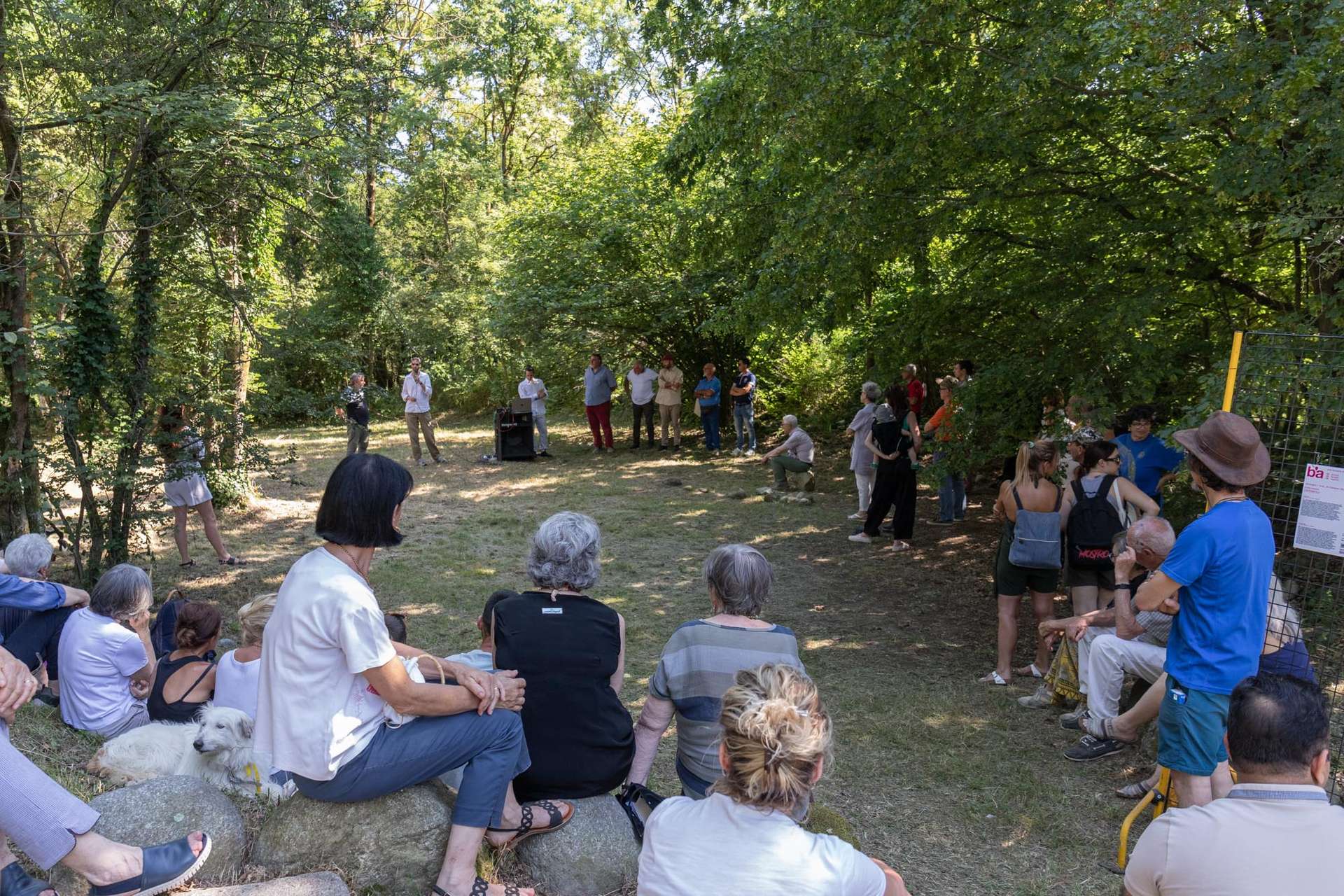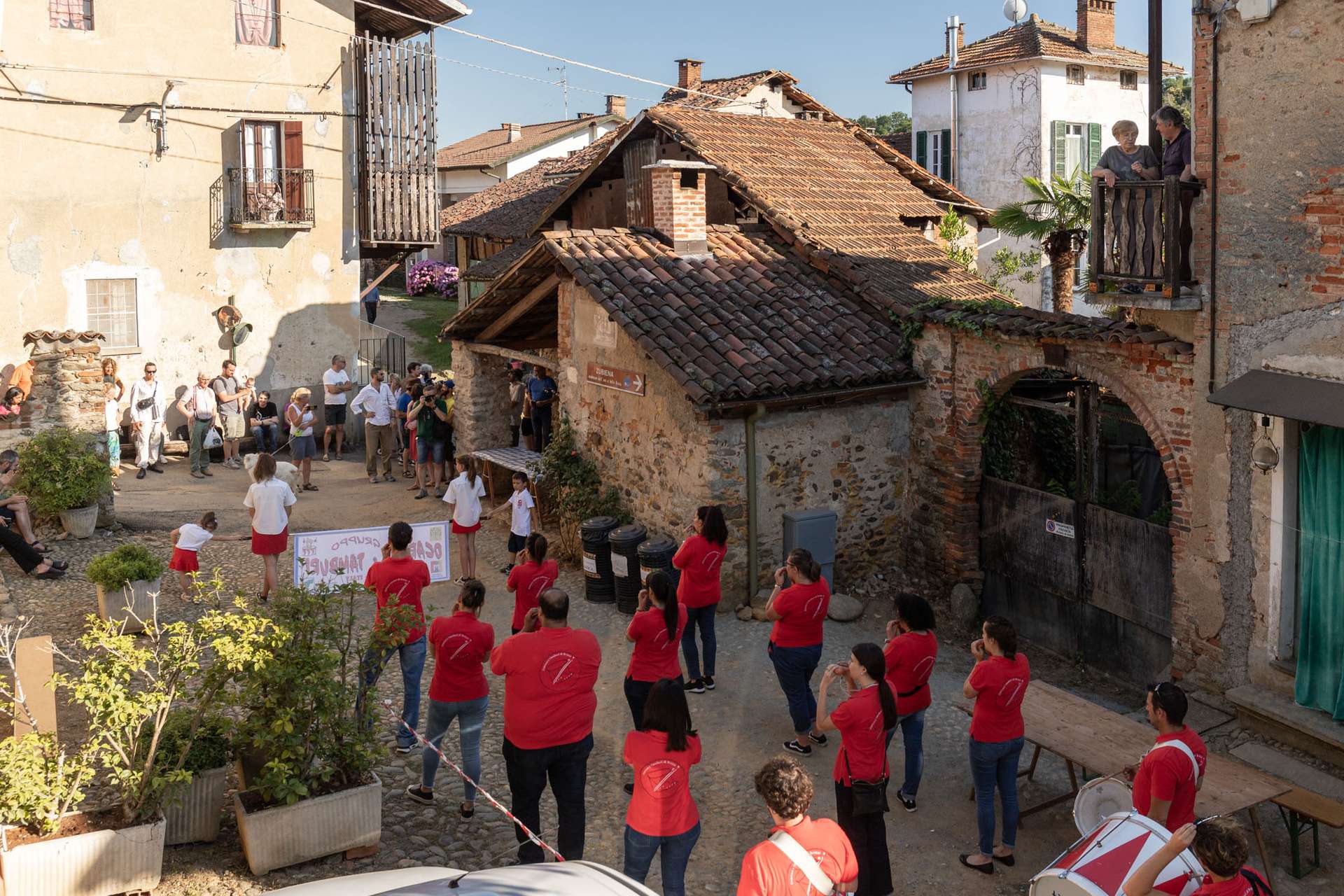VICTIMULA is an incorporeal, tacitly collective operation, that reintroduces, in virtual form, the search for gold that since Roman times has been a feature of the area adjacent to the Bessa plateau, once the country’s largest open-cast mine. According to millenary traditions, when the people who looked for gold, equipped with patience and dedication, finally discovered it, they did not sell it, but kept it and cast it into wedding rings or for exchange with other goods.
On the occasion of VICTIMULA, Invernomuto virtually positions one thousand gold nuggets in the Bessa area, set amongst the rocks of the village of Vermogno and scattered across its landscape. These nuggets can be collected and stored in the prospector’s digital wallet for future use. In this way, the gold nuggets once sought amongst the erratics in the river areas have been given new form and will regain their original value as items for exchange. VICTIMULA inaugurates what will be an open-ended process of collecting tokens – virtual coins fungible in future contexts, designed by Invernomuto, through blockchain technology – to build a shared and immutable register.
The virtual reproduction of the context was created not with the intention of fleeing from reality, but rather, to recreate it faithfully, together with its landscape and history, underlining the deeply-rooted activity of searching for gold in the area and the village’s sense of oneness with its traditions. An audio installation by Invernomuto takes place at the same time as the first collective search for gold, on the occasion of the inauguration, and it cadences its temporality: each nugget discovered generates a variation of sound, on every occasion unprecedented and perpetual.
VICTIMULA is an invitation to exploration, a collective game, evoking a distant past of gold fever but charged with a new contemporary form. An ephemeral and immersive intervention, which begins in Vermogno and opens up to connections and exchanges outside time and space.
ㅤ
Permanent artwork:
Invernomuto, VICTIMULA, 2023, AR app.
Curated by Threes. Creative developer: Ville Niemi Viiksimaisteri. 3D designer: Giuseppe Sciabica. Project manager: Boris Cassanmagnago.
ㅤ
Widespread work: The route can start from any point within The Natural Reserve La Bessa, or from Victimula Goldpanners' Arena, Cantone Milano 53, 13888 Zubiena (BI).
"VICTIMULA" (2023) REENACTS THE ANCESTRAL TRADITION OF GOLD DIGGING IN VERMOGNO: HALFWAY BETWEEN A COLLECTIVE GAME AND AN ACTUAL INVESTMENT, VICTIMULA IS AN AUGMENTED REALITY APP TO COLLECT VIRTUAL GOLD NUGGETS
Invernomuto is the name of the artistic personality generated in 2003 by Simone Bertuzzi (Piacenza, 1983) and Simone Trabucchi (Piacenza, 1982), who both live and work in Milan. Invernomuto is the author of research projects articulated in time and space, resulting in cycles of interconnected works. On a common theoretical basis, Invernomuto tends to reason in an open and rhizomatic manner, developing different outputs that take the form of moving images, sounds, performance actions and editorial projects, in the context of a practice defined by the dispersed yet timely use of different media. Reality is observed according to documentary principles and interests, but to render an imaginative and almost abstract representation of it, which opens margins for reflection and critical questioning.
In 2021 Invernomuto participated in the Liverpool Biennial, 58th October Salon-Belgrade Biennial and Pompeii Commitment, Pompei; their work was also presented at the 58th Venice Biennale, Tate London and Manifesta 12, Palermo. They have exhibited in major group shows, most recently at: MAXXI, Rome; OGR, Turin; Kunstmuseum Liechtenstein, Vaduz; MACRO, Rome. Solo exhibitions include those at: Sismógrafo, Porto (2022); VOID Gallery, Londonderry; Auto Italia, London; Galleria Nazionale, Rome (2019); Pinksummer, Genoa (2019); Artspeak, Vancouver (2015); Marsèlleria, Milan (2014); ar/ge kunst, Bolzano (2014).
IS AN INVITATION TO EXPLORE, A COLLECTIVE GAME THAT PROPOSES A VIRTUAL TREASURE HUNT, AS PLAYED IN THE BESSA AREA SINCE ROMAN TIMES
Vermogno is a hamlet of Zubiena with about 120 inhabitants. The rural characteristics of this village, compact and with just two streets, are apparent from the architecture of the houses in stone and brick, with wooden balconies and small windows. An expression of an economy linked to subsistence farming, the artefacts and buildings are the outcome of a profound connection with the adjoining Bessa natural park. Between the 1st century B.C. and the 1st century A.D., this narrow strip of land was the Roman Empire's largest open-cast gold mine.
The village of Vermogno can be considered a typical example of a situation of economic marginality due to a hilly terrain, where agriculture is no longer able to generate an adequate income, and the distance from the main settlements and infrastructure. Despite this, Vermogno pays great attention to the quality of life and human relations, supporting the development of new forms of active citizenship. For example, the Forno Comunitario (Community Oven) project stands out as a symbol of Vermogno's conviviality, a space to be shared and available to all, as was the custom in rural tradition in order to enjoy other people’s company. After all, the word ‘companion’ is derived from the Latin ‘cum panis’, meaning those who eat the same bread.
